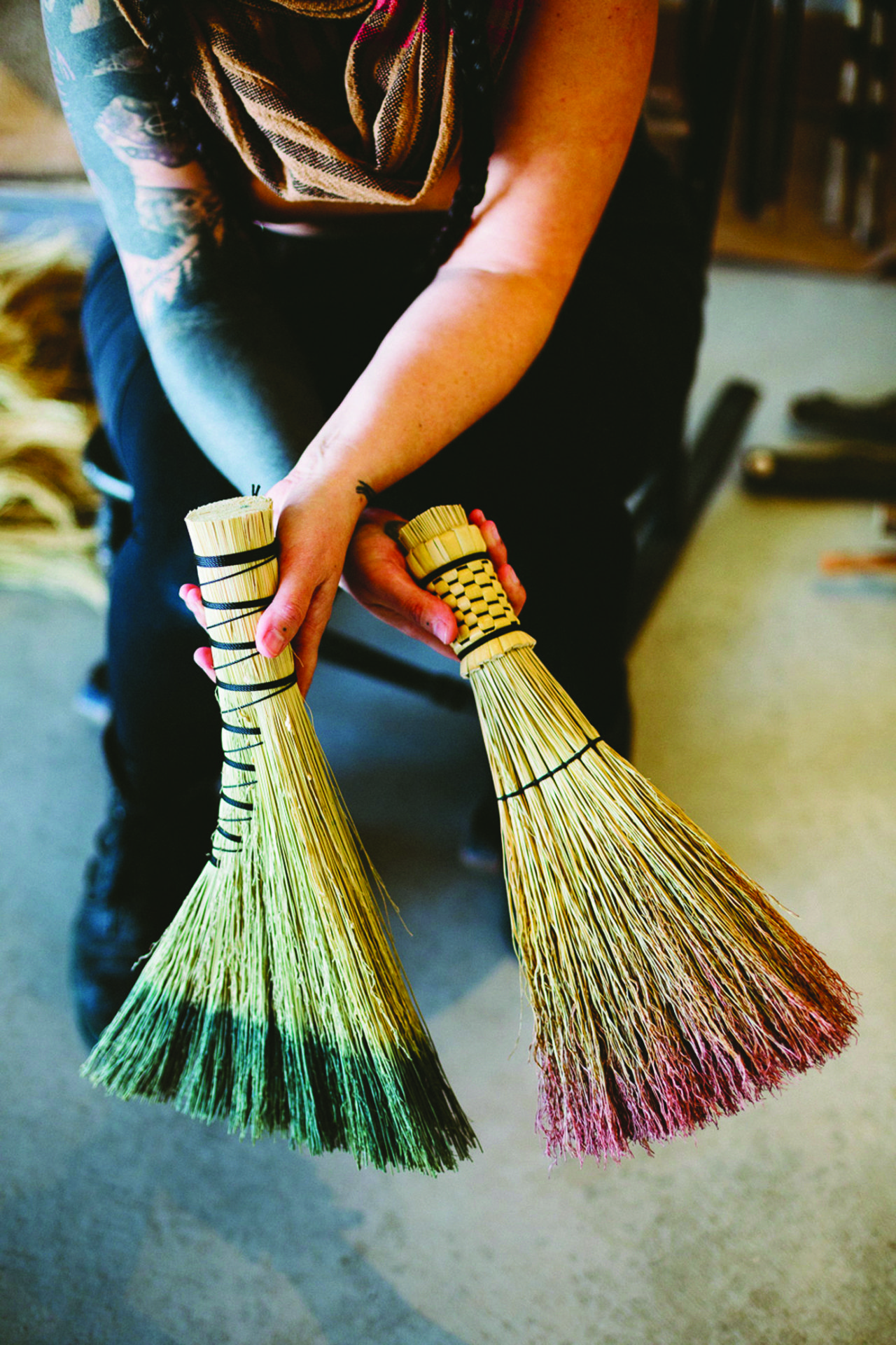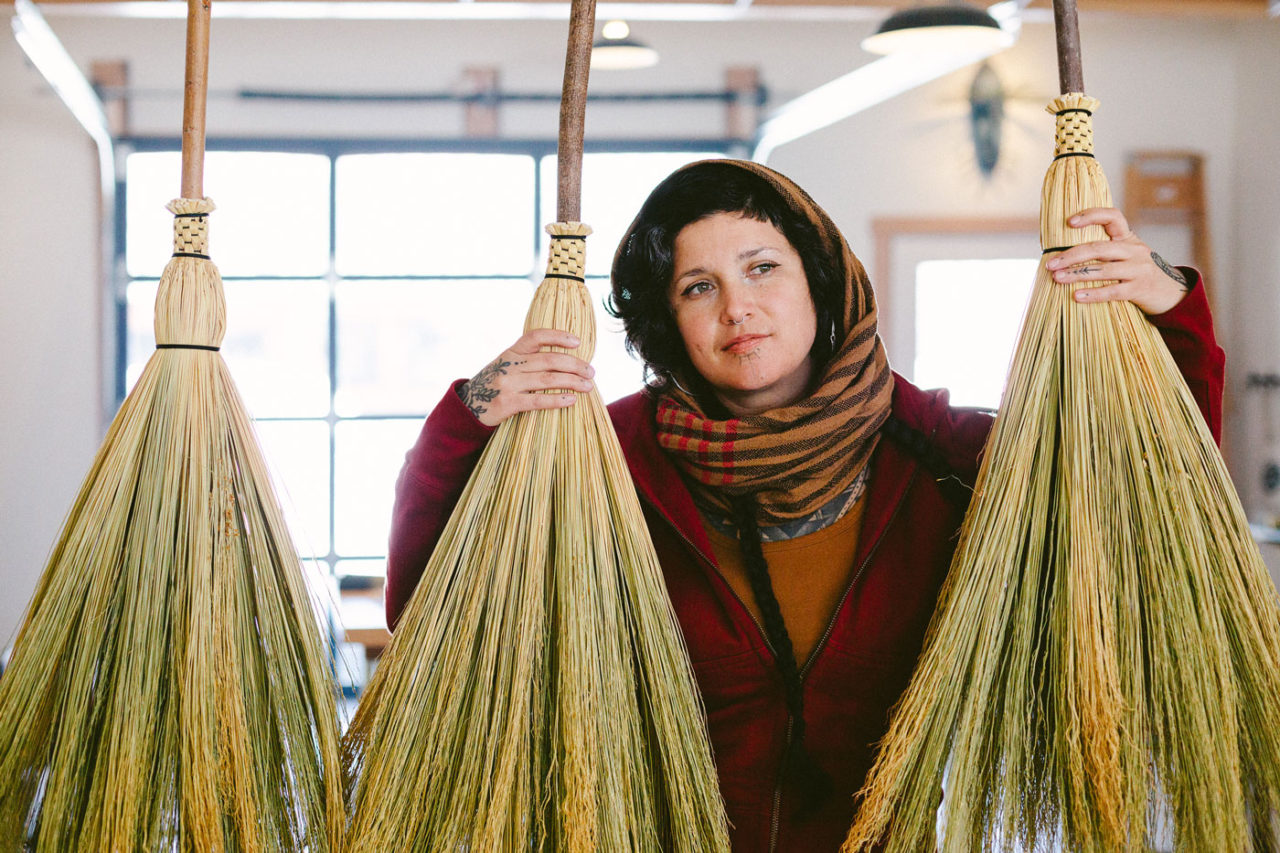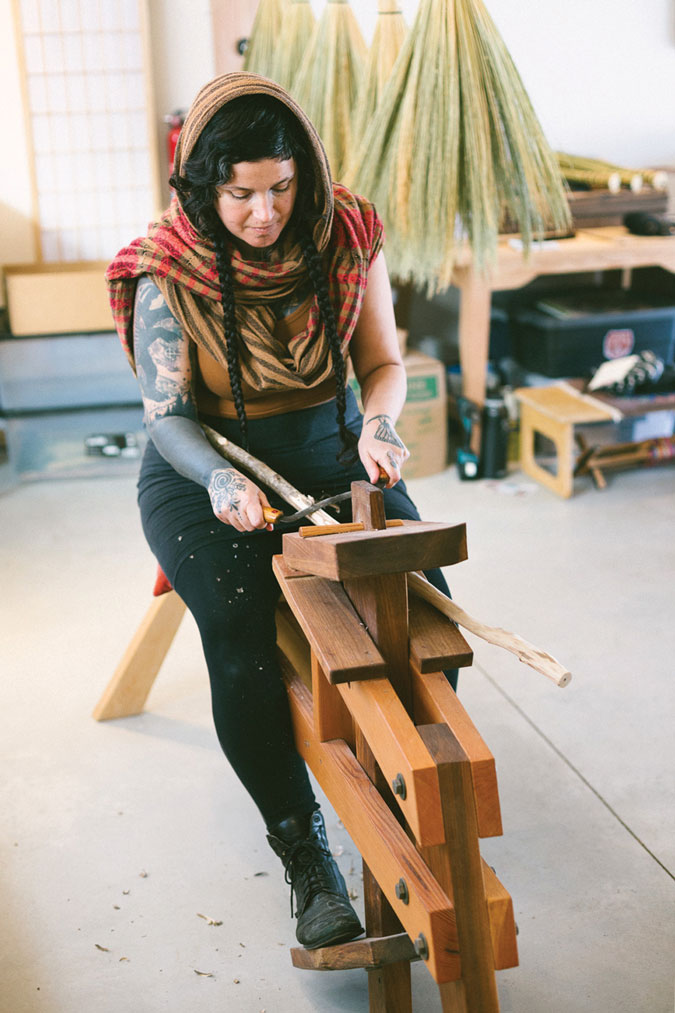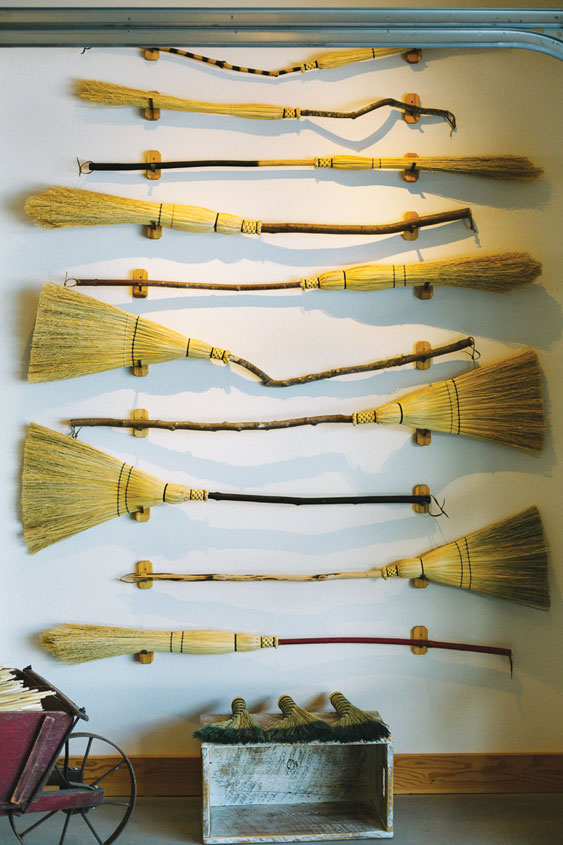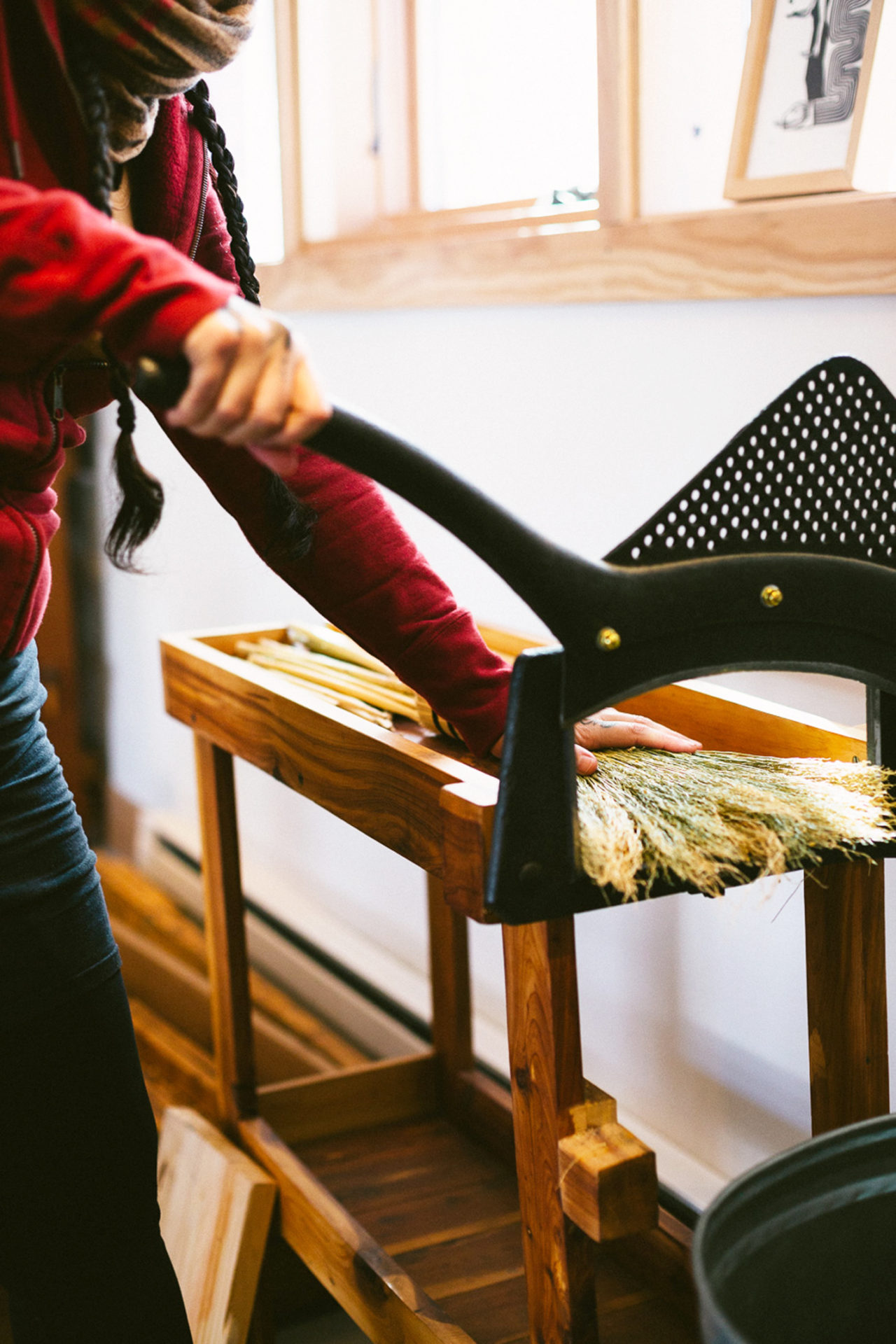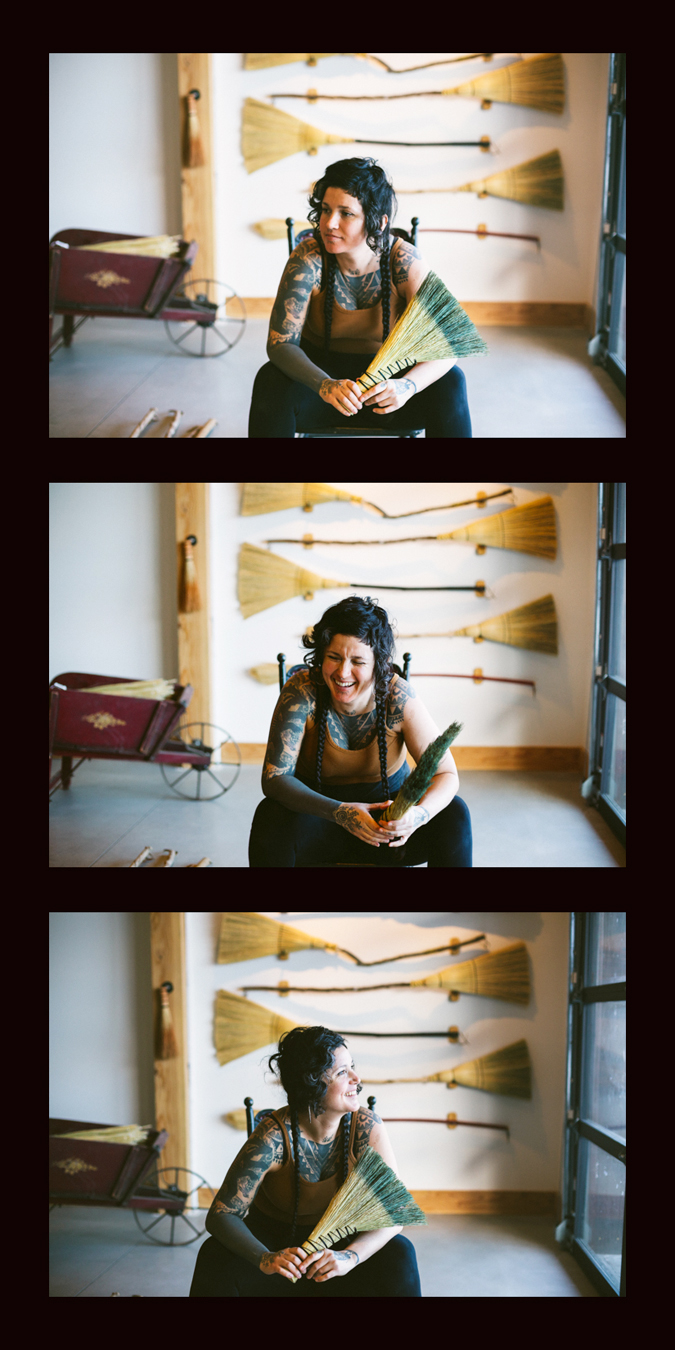By Marcy Stamper
Photography by Sol Gutierrez
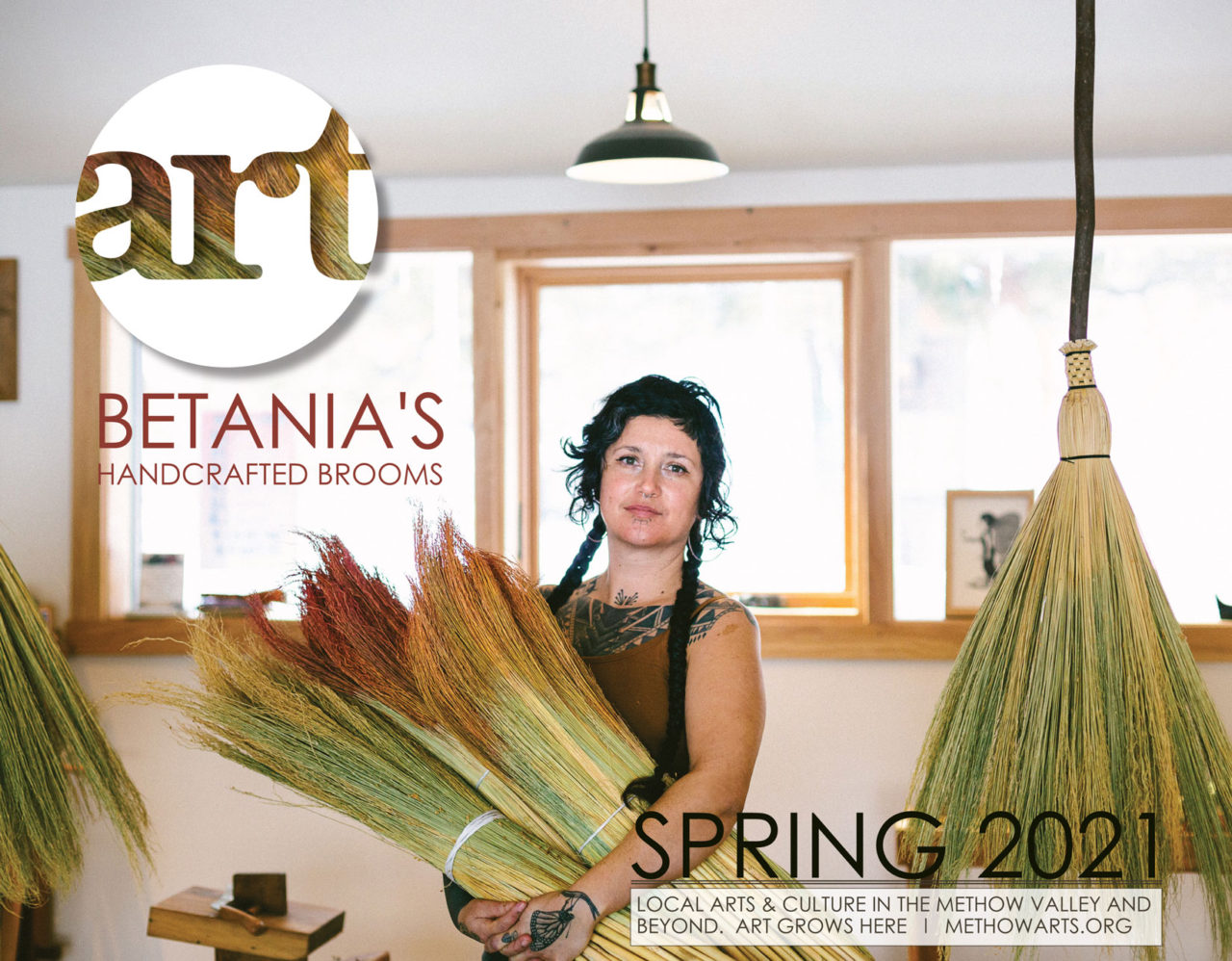
Betania (pronouns: they/them) of Bristle & Stick Handcrafted Brooms knows intimately how to take a seemingly mundane chore and transform it into art and a profound, life-affirming ritual. Betania makes brooms by hand, creating exquisite, functional works of art that are part of a healing, restorative practice.
“Sweeping a room can shift the energy faster than almost anything,” Betania said. “That’s a really effective practice and makes the broom a very powerful tool.”
That power is heightened by Betania’s connection with the elegant brooms they make in the folk tradition. “When you have a beautiful handmade tool, it becomes less of a chore. There is a certain spirit and life essence when you know the energy and story behind a handcrafted object you are working with,” they said.
“People tend to separate energy and matter. One will typically energetically clean a space – or be working to physically clean it. I prefer to do both, at the same time, when I’m cleaning,” Betania said.
These sweeping rituals are not only therapeutic, but are part of Betania’s essence. “Things aren’t always binary, even though we are often taught to think of them that way. A space can look really clean, but in actuality be really messy-feeling – or vice-versa,” Betania said.
Betania feels a kinship with non-binary elements of the natural world around them. Betania said their identity has always felt very amphibious, “like I don’t fit into any of the assigned boxes.” Their ancestry is mixed, with roots in Mexico, the Iberian peninsula, Sardinia, and Wales.
Healing through nature and cleaning
Today Betania flourishes as an artist and a healer. But they arrived at this creative and fulfilling place after a tough and painful period as a teen and young adult.
Betania was signed over to the state of California as a 12-year-old and went from group home to institutional setting to juvenile hall, sometimes living in their car, and sometimes “on the streets.” As a result, Betania became wary of humans, but found solace in nature, feeling accepted and nourished living in wild places and among trees.
They also found much-needed healing through daily rituals of cleaning and sweeping. At first it was unconscious, simply an act that felt soothing, safe, and empowering. Ultimately Betania recognized that they were sweeping away the trauma of all those years. “Sweeping cleared my mind and helped me to feel calm when the world felt really chaotic and unsafe around me. It gave me a sense of stability and empowerment,” Betania said.
Betania started collecting handmade brooms as a teenager. They started making brooms about seven years ago after moving to the Methow Valley. They instantly fell in love with the process and made hundreds of brooms while living and working on a farm in Carlton.
Time-honored technique
Betania uses the oldest broom-making techniques, which are both delicate and very physical. The process demands strength and stamina to maintain tension on the foot bobbin as Betania wraps twine to secure the layers of broom corn.
Betania makes many types and styles of brooms. Full-size farmhouse brooms, cobweb sweepers, and hearth brooms are all woven onto natural wood handles. Betania also makes turkey-wing hawk tails, woven whisks, and a few other hand-held styles.
Betania has developed their own style based on traditional folk designs. They sort the broom corn (Sorghum vulgare) by different characteristics and, when they’re ready to make a broom, grab the handfuls of sorghum selected specifically for that style of broom and weave them together, layering each bunch in a distinctive design. For some brooms, the bundles are soaked before weaving, but others are not.
To attach the broom handle, Betania holds and balances the broom while binding the corn with a continuous strand of twine, a process that takes about an hour. If it’s not tied just right, the whole thing will fall apart. “It’s the oldest, most difficult way of making brooms, but I like doing and teaching crafts in older, more intimate ways because it develops a deeper relationship and respect for the work, as well as a better-quality, longer-lasting item,” Betania said.
The “knuckle,” part of the sorghum plant that’s used for decorative weaving, has to be soaked before it can be worked. “It’s pretty hard on your body – the pulling and sitting,” Betania said.
A broom on a handle has multiple layers of soaked and woven material that needs to hang for two weeks to dry before the layers are sewn and then trimmed. Most brooms are sewn flat, but some are left round. “You sweep differently with a round broom,” they said.
Betania forages in the forest for broom handles, selecting narrow branches of trees such as saskatoon, maple, hazel, myrtle, willow, and red-osier dogwood that have to cure for a year before they can become handles. Some handles are straight, while others have sculptural bends and twists. Part of the process is always asking the plants and forest spirits for permission, and then selecting the ones that want to be in service as a broom, Betania said.
Betania leaves some handles as natural wood. Others are burned black or to create designs, or are decorated with milk paint made from earth pigments. The brooms are naturally understated earth tones, but some are bound with rainbow twine or have bristles dyed collaboratively with Methow Valley textile artist Sara Ashford of Culler Studio.
Before specializing in brooms, Betania had pursued other crafts, including hide tanning, basket weaving, and painting with earth pigments. “It’s deeply healing to work with my hands, and to sit in a circle with people and make things,” they said.
“I just fell in love with the old ways of craft – with having a relationship with a tool you use every day that’s enlivened with spirit, versus something made in a factory,” they said.
Betania shares that process of creation by teaching broom-making and other craft workshops. Before travel and group classes were shut down by the COVID pandemic, Betania taught broom making up and down the west coast. A series of workshops on the east coast had to be postponed.
Higher beings
After humans failed to care for Betania as a teen, Betania found themselves turning to plants and animals. Betania sees plants as higher beings. “My best friends are non-humans,” they said.
Betania is drawing on their life experiences and art to help others heal from trauma. They are studying a form of therapy called somatic experiencingTM, which uses movement to help people work through the physical scars of trauma.
As someone who’s experienced these challenges firsthand, Betania believes they bring an essential understanding that can build trust and help others heal. People who need healing the most often have the least access to the support we need, they said.
Betania will be working as an advocate and mentor to help and uplift underserved youths in Okanogan County. “You understand things in a different way when you have actually experienced them,” they said.
For Betania, cleaning is a very effective way of healing, a means of letting go and of giving things back to the land. “There is ritual, sacredness, and magic in the most basic, everyday things we do – if you chose to see it,” they said.
Betania’s work can be seen online at www.bristleandstick.com and at their studio on the TwispWorks campus.
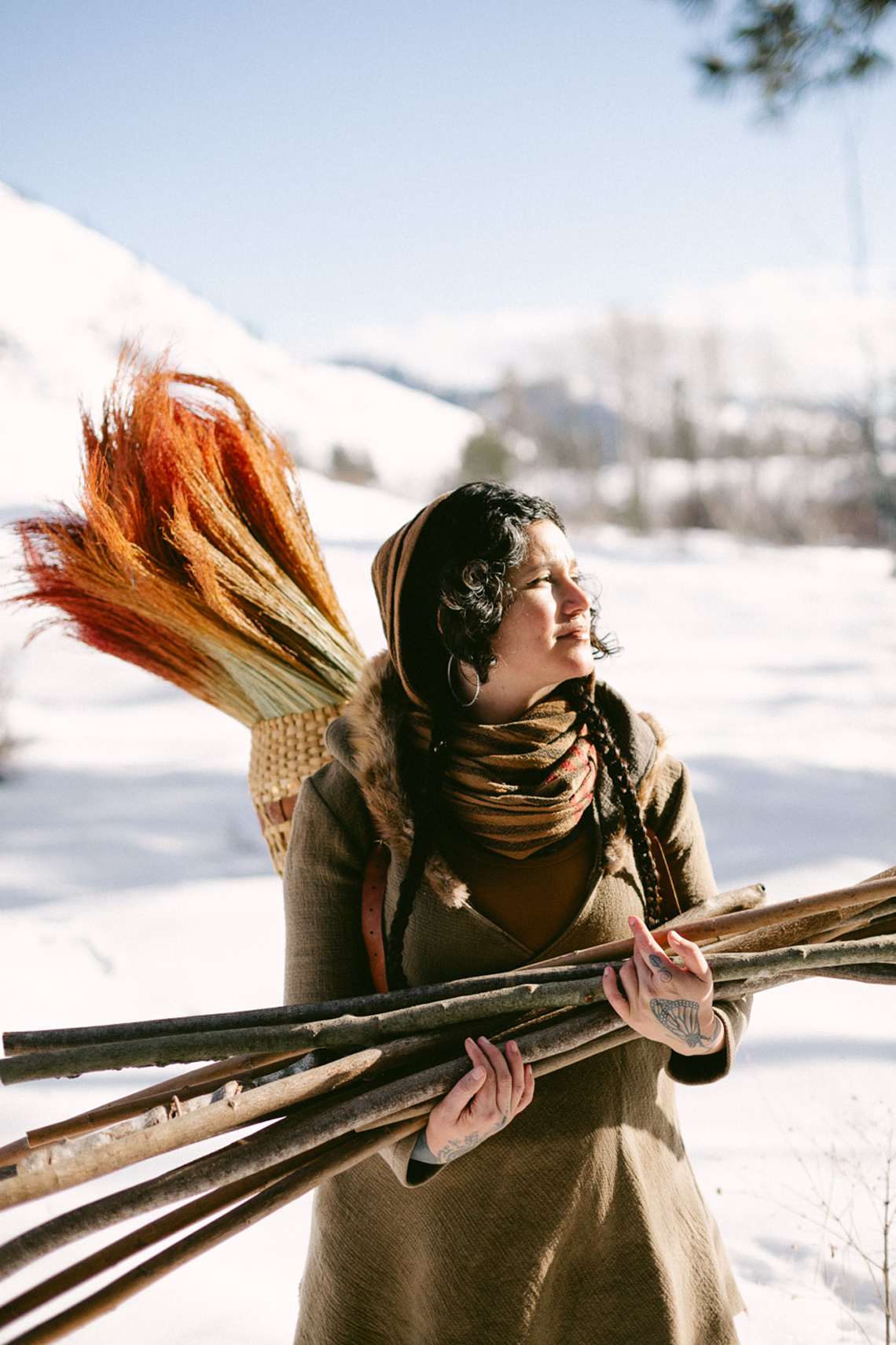
Photo by Sol Gutierrez. 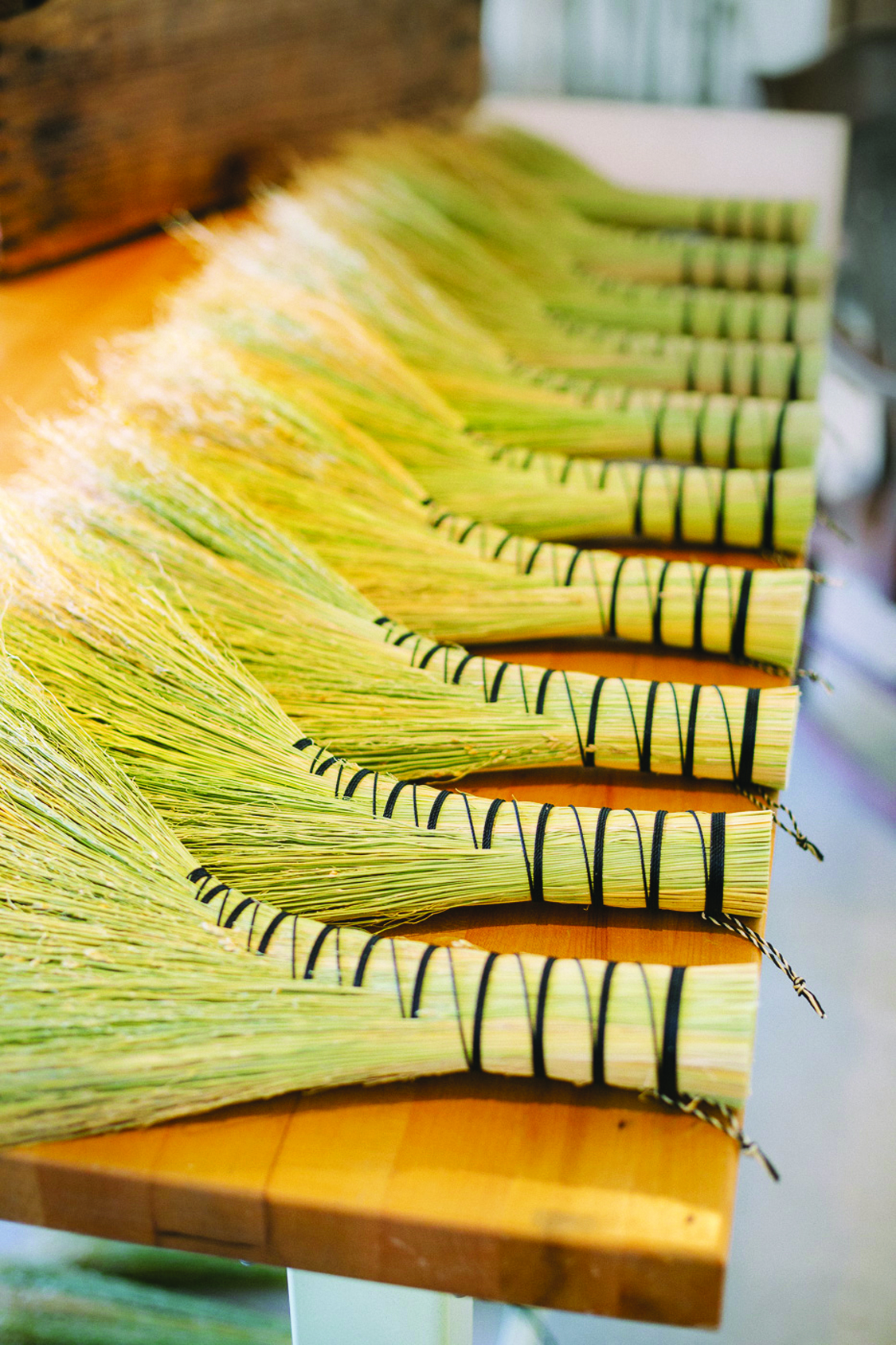
Photo by Sol Gutierrez.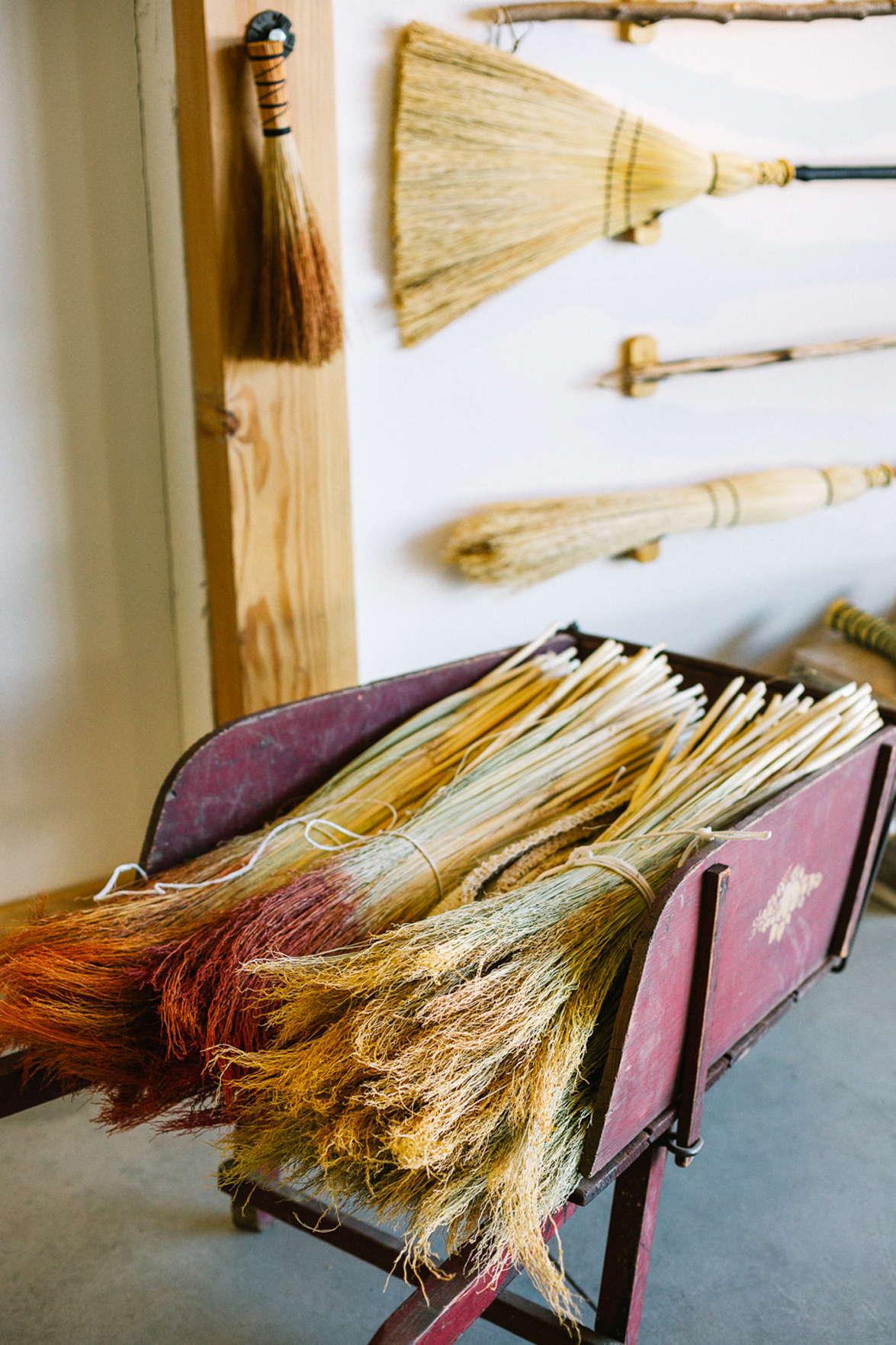
Photo by Sol Gutierrez.
.

